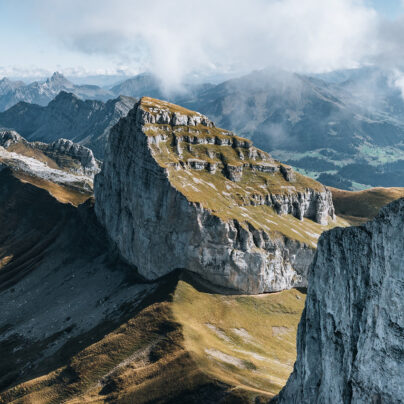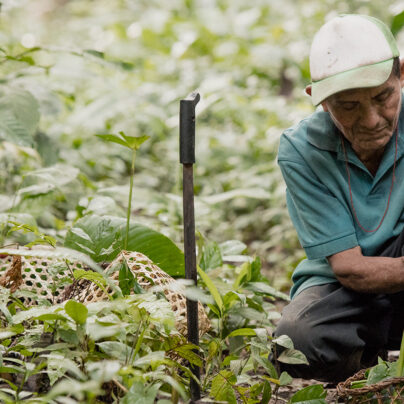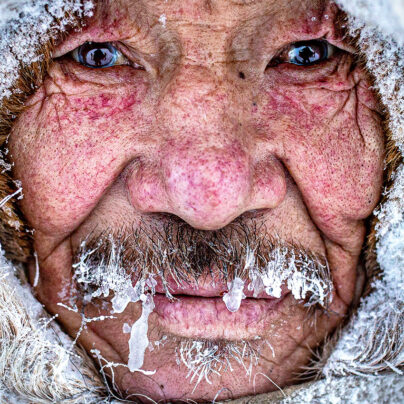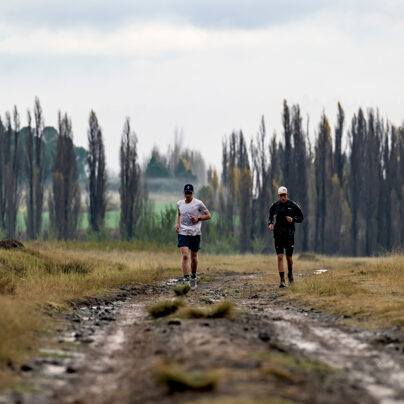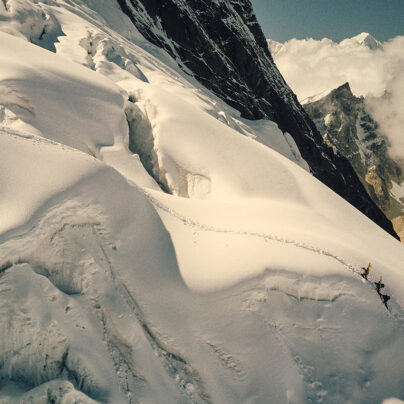Mountain Of The Spirit
Lily Dyu
Photography by Richard Bull & Mark Brightwell
At 4,000m, the sun was penetrating, loosening rock and ice. Gleaming chains of peaks ran in every direction and faded into the horizon. Above me, a raptor floated on thermals, silhouetted against the blue, whilst below me, glacial lakes were turquoise gems set into the platinum landscape. In the silence, I could hear my heart pounding. In Sanskrit, Manaslu means ‘Mountain of the Spirit’ and in this place, where heaven and skies meet, the thin air seemed imbued with an otherworldly spirit.
A low rumble rose from below and echoed about the valley. I stopped to watch the debris of a small avalanche tumble over the crevasse-scarred glacier, snaking around the mountain. Breathing hard, I continued up the steep trail, my running long slowed to a hiking pace. My eyes followed the path to the snowline, and here the first runner appeared. He was on his way to the finish before I was even a third of the way to the turnaround point.
Lumpy in a leotard, terrible at tennis and hopeless at hockey – as a child I was the polar opposite of sporty. My younger self would have laughed and snorted if you’d told her that one day she’d run a ‘sky race’ to the base camp of the world’s eighth highest mountain. Yet here I was in Nepal, with 40 others, including world-class ultrarunners, on the fifth stage of the Manaslu Mountain Trail – an eight-stage foot-race, covering 212km and 13,500m of ascent around the 8,156m mountain. I’d been a runner since my twenties, and my goal was simply to complete rather than compete, and to trail-run in a country I’d long wished to see.
In the lodge at Deng, we crowded around long wooden tables, wrapped in down jackets and hats, eating dhal and roti. We hadn’t washed for days, apart from wet wipes or a Thermos of hot water, but thankfully all we could smell was the aroma of the spices rising from our bowls. Laughter and talk warmed the air. Outside, it was pitch black, but the glint of a head torch signified the final runner arriving from that day’s 40km stage. I’d been one of the last to finish that evening, running the last 10km alone through a wooded, shadowy gorge, abandoned early by the sun, with alpenglow smearing the mountaintops pink. Running by moonlight, and guided by the sound of the river, I ran against the chill to the glow of the tiny hamlet, where the quickest runners had arrived hours earlier.
That evening, there was a long, tired wait for our bags to be delivered when the mules took longer than expected to make the journey. Eventually I went to sleep in a tiny space that doubled as a storeroom, amongst sacks of rice and lentils. In another mountain hut, with no window panes, and fully dressed in my sleeping bag, I slept fitfully as the banshee wind wailed outside. It was a couple of years before the region was to be stricken by the 2015 earthquakes, and living conditions were already hard. In many villages, there were no schools, medical outposts or clean water, and firewood was still collected daily. Our accommodation had no light or electricity, whilst Asian squat toilets and frozen water added to the challenges for many of us who may have taken the comforts of the developed world for granted.
A low rumble rose from below and echoed about the valley. I stopped to watch the debris of a small avalanche tumble over the crevasse-scarred glacier, snaking around the mountain. Breathing hard, I continued up the steep trail, my running long slowed to a hiking pace.
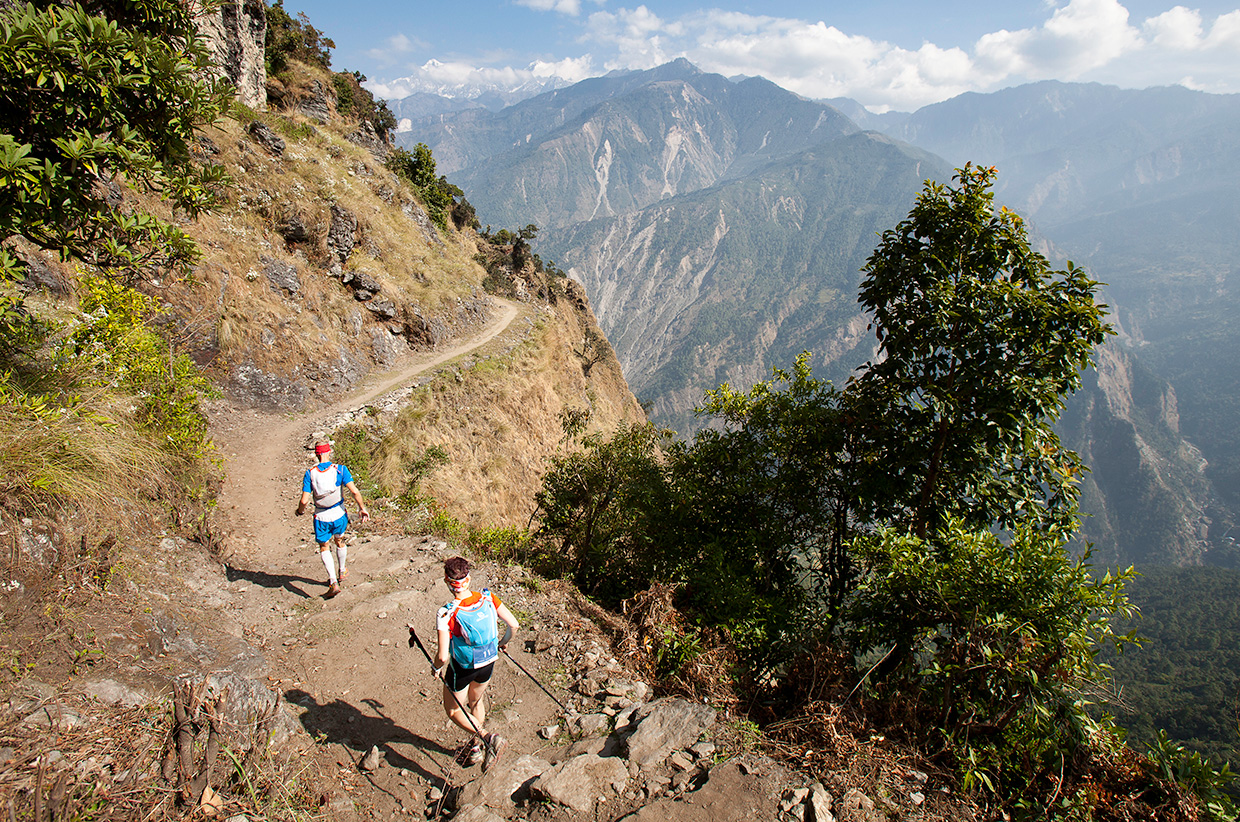
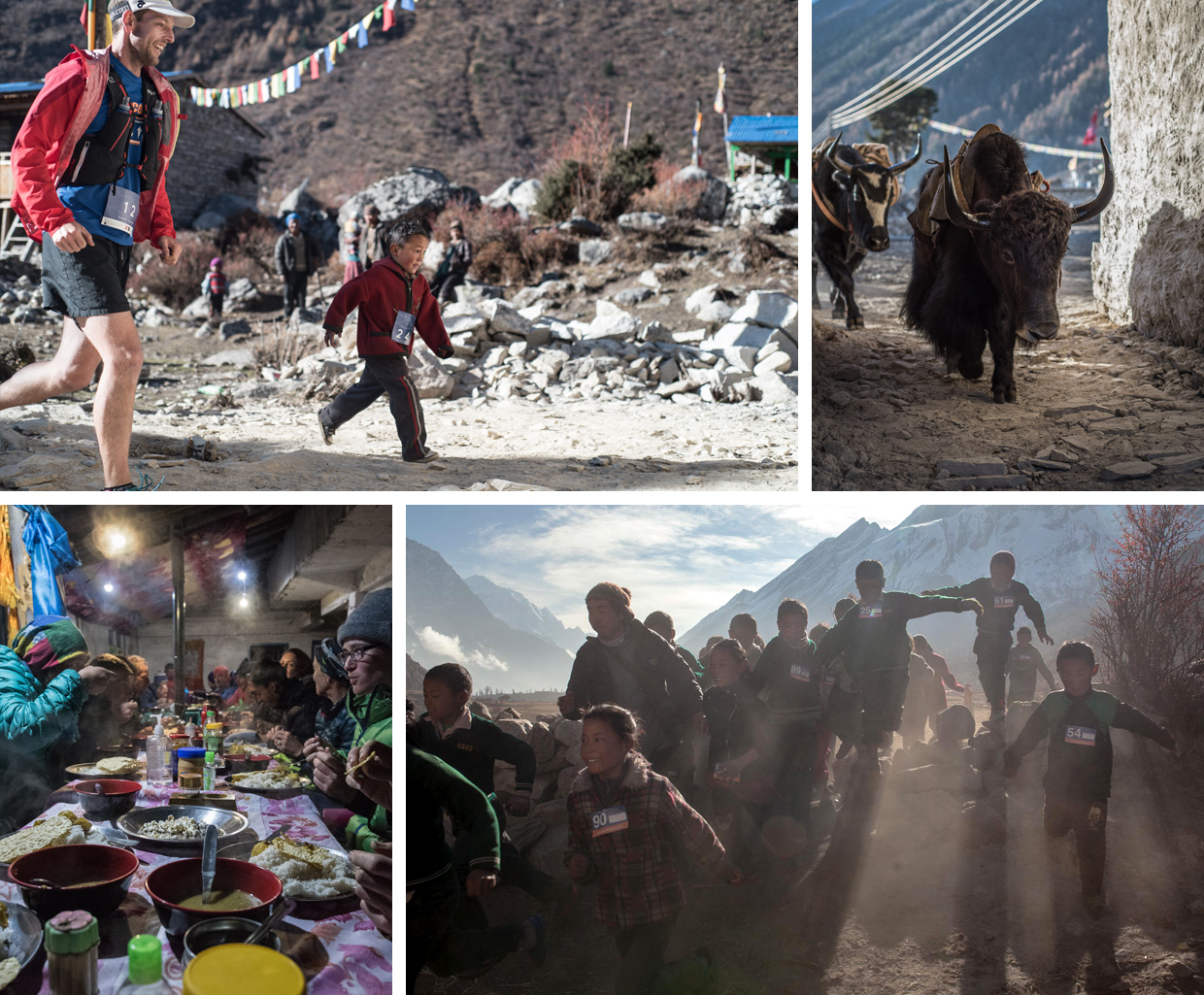
Waterfalls tumbled far down mountainsides into ravines so deep we could only hear the roar of the glacial river below. Each day, Manaslu drew us ever closer – its twin peaks veiled in wisps of cloud, streaming into the blue.
Yet the cold and physical hardship were small things to endure for our journey and a glimpse of life in these remote communities. We ran through Hindu villages perched on steep, terraced valley sides, and across suspension bridges strung between autumn-tinted forests. ‘Namaste! Namaste!’ the children giggled, darting alongside us, as we jogged through a puddle-strewn alleyway between wooden houses. A chicken pecked in the dirt next to a lazy dog dozing by a wall. Two boys hit a shuttlecock back and forth, whilst some younger children played in a doorway, wrapped up like little fat Buddhas, with matted hair and runny noses. One of them clutched a grimy blue Smurf toy whilst his mother swept the floor inside a shadowy room. As we left the village on trails splatted with yak and mule dung, a man and woman hurried past, bent forward with heavy baskets strapped to their heads, but glancing up at us shyly.
Waterfalls tumbled far down mountainsides into ravines so deep we could only hear the roar of the glacial river below. Each day, Manaslu drew us ever closer – its twin peaks veiled in wisps of cloud, streaming into the blue. Up in these mountains, life seemed more vivid and intense – the taste of yak’s cheese and chapati at lunchtime, the sip of sweet tea at a checkpoint, the scent of barley drying in the sun, the breath of chimney smoke, the purple of the rhododendron growing beside the trails. Climbing higher, we emerged in a secret Tibetan landscape of high, wild valleys where yaks grazed in open scrubland next to fields of barley. Intricate mani walls, carved with Tibetan scriptures, signified the entrance to the Buddhist villages, where prayer flags stretched across acres of sky.
It’s 2.00am and I’d crept out into the frozen night to take a pee. We were staying at Hinang Gompa, a Buddhist monastery high in a hidden valley. I looked up and my heart stopped to see the Milky Way arching across the purple-black, between moonlit snowy peaks. The next morning, the sound of prayer wheels stirred us from warm sleeping bags. After breakfast we retreated from the bitterly cold courtyard into the shadowy temple, thick with incense smoke and lit by flickering candlelight. A group of crimsoned monks and nuns murmured prayers, some looking as ancient as the gnarled trees below in the valley. We had brought solar lights and donations for the village, as we had in all the places we stayed. The head monk blessed each of us in turn, wrapping cream scarves around our necks before sending us down the valley. We were grateful to finally be able to run and warm up.
On my longest day of fourteen hours, we started at 4.00am from Samdo, a village high on the lunar landscape of the arid Tibetan plateau at 3,800m. From here, we followed moonlit paths until sunrise brushed gold onto the surrounding peaks. Through snow and in glaring sun, it seemed a never-ending climb up to Larkya pass at 5,160m. Here we rested, elated and emotional, sensing that this point indicated the end of our journey was close. Around us, prayer flags fluttered against white and blue and a panorama of iconic peaks, including Annapurna II. We made a long, difficult descent from the pass, chilled by a sudden wind, passing by our mules, who were also struggling on the steep, snowy trails, until we reached the valley bottom, littered with glacial moraine. Here I ran and stumbled, exhausted, into the dusk and flickering lights of Bimthang.
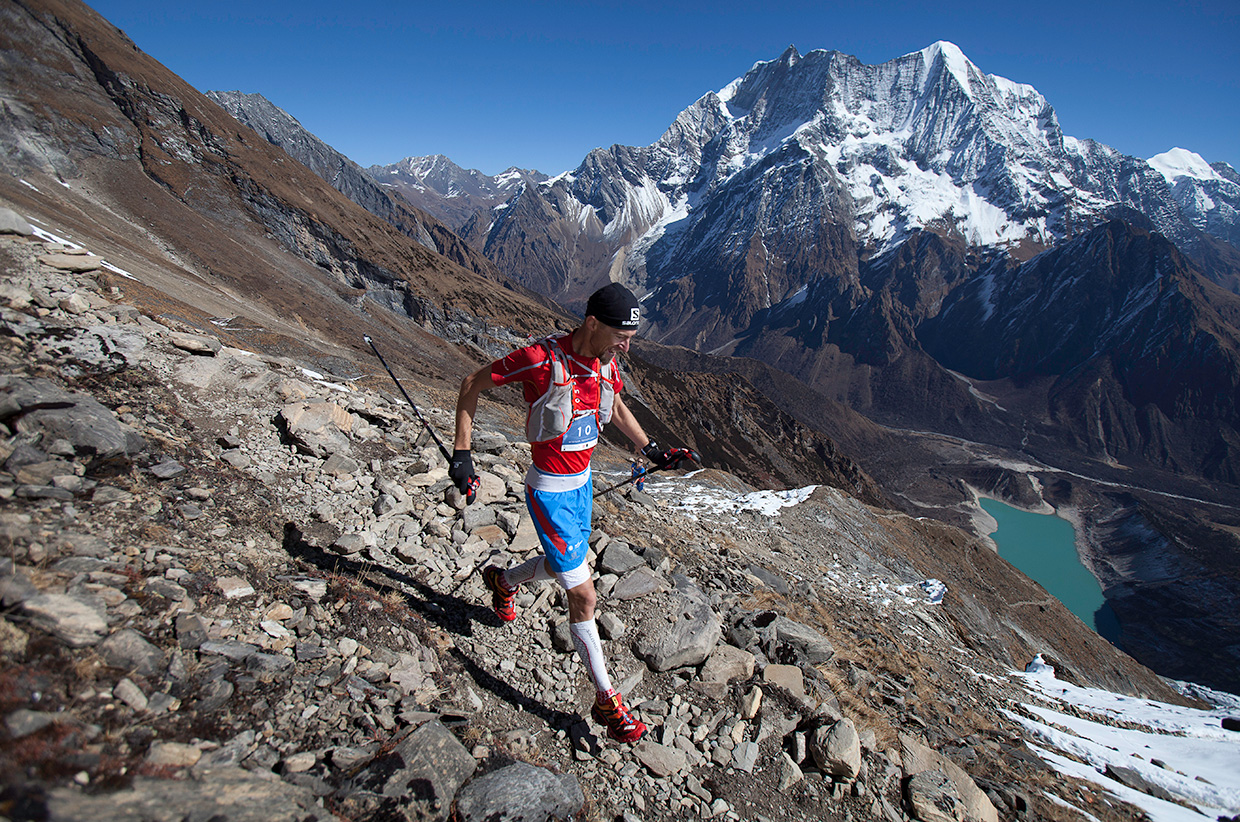

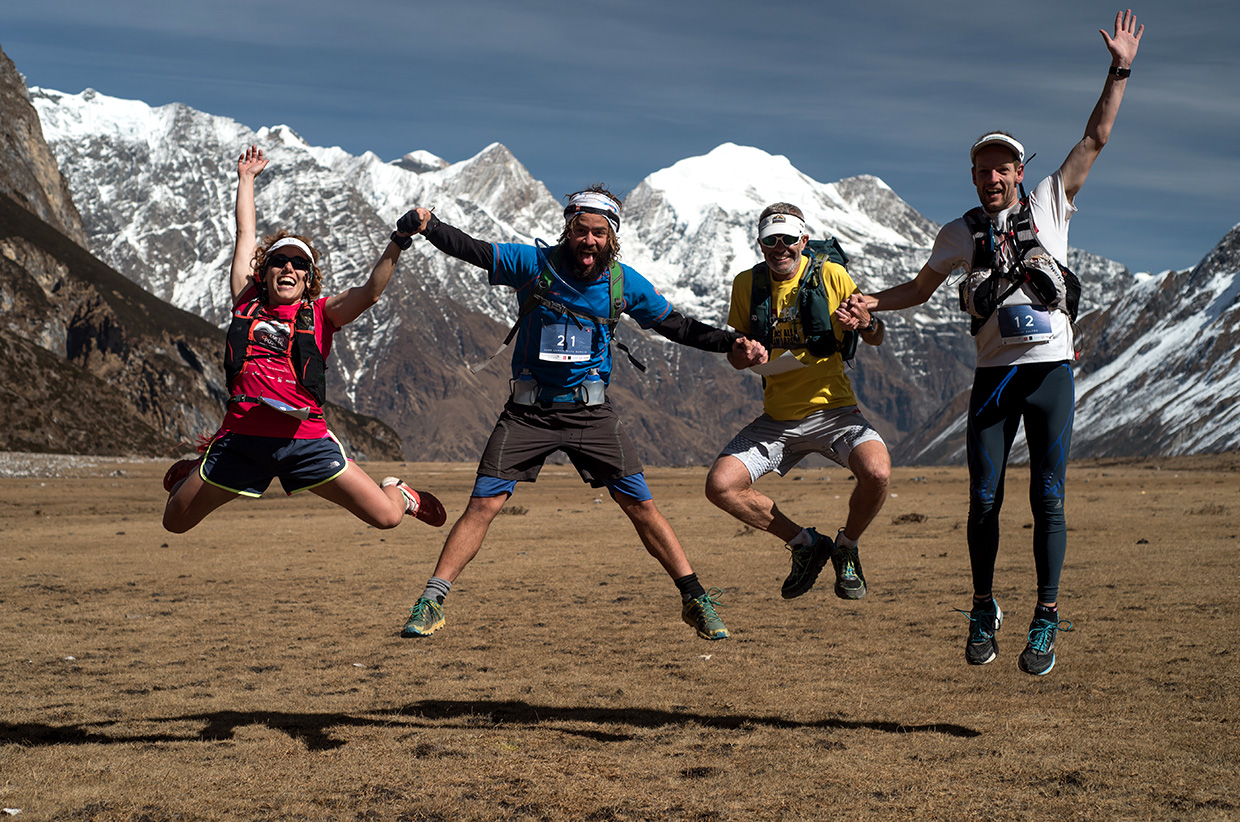
The beauty of the Himalaya is etched into my dreams, but it’s the memories of the people that will stay with me forever. Fifty schoolchildren, running and laughing through Samagaon village, dust streaking their maroon uniforms, in the early morning race we’d organised; the Tibetan family in Samdo, who shared their dung-heated hearth with curious runners, in a dim, two-room dwelling, warmed by the yaks kept beneath; and the kind Nepali porter-cook, Kumar, who carried my pack the last steps to the pass when I was breathless with altitude, later guiding me down icy slopes to safety at the next village. Lifelong friendships formed amongst the runners, who celebrated each day’s journey, supported one other and shared their stories.
On the last day, we descended quickly on forest tracks and riverside trails, nourished by the sweet, thickening air. Dropping 1,000m over 20km to the finish at Dharapani, the running felt effortless after days at altitude, but as we approached the village, I slowed to drink in views of valleys hung with cloud, feeling the cool of the river and listening to its thundering waters, not wanting my journey to end.
Somehow, this sports-hating schoolgirl managed a respectable 25th place in the race. I had gone to Nepal to feed my running habit with the beauty of the mountains, but what the experience really taught me was what is essential in my life and what can be stripped away. Though every runner trod the same sky-high trails around Manaslu, I was making my very own journey of self-discovery.
Lily Dyu is a runner and writer based in the Brecon Beacons, Wales
Photography by Richard Bull / manaslutrailrace.org and Mark Brightwell / www.markbrightwell.net




